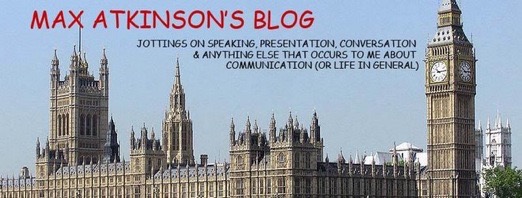In previous posts, I've suggested that the long-winded nature of Latin-based languages like Italian and French are more long-winded than Nordic and Germanic ones and that this may have an impact on how much speakers of such languages use gestures when speaking (HERE & HERE).
I don't read a word of Arabic, nor do I know what an 'IDF Room' is. But I was intrigued enough by this notice on a wall in my hotel in Dubai to get my camera out:

On the face of it, it looks like a serious competitor to one from an Italian notice posted last year (HERE):

But, whereas three syllables of English were enough to translate nine syllables of Italian, I have no idea how many beats are depicted in the Arabic writing above (or whether the English version 'cheats' by using an acronym that defies translation).
Nor do I know whether native speakers of Arabic are reputed to gesticulate more vigorously than native speakers of English.
So today's question is to ask whether anyone can shed any light on these intriguing questions?

5 comments:
An IDF (Intermediate Distribution Frame) room is the little room that houses the internet connections and networks for office clusters, floors of a building- in your case the floors of a hotel.
And to answer your question- Arabic is very long winded and has been this way since the 6th century.! This particular example of long-winded'ness is due to the fact that they don't use acronyms as much as we do in English as, what we would perceive to be an acronym would in many cases just look like another word in Arabic. This is why they've completely written it out as 'غرفة موزع خطوط الهاتف الوسيطة' which translates with the help of my dictionary to 'chamber for the distribution of telephone lines' or something similar :')
It's a really beautiful language, but I will agree you- VERY long winded.
Deanne - fascinating, and I loved your long-winded translation of the Arabic!
But do you have any thoughts about whether native speakers of Arabic gesticulate more vigorously during conversation than we do, a curiosity in which was what prompted the original post on the subject at http://maxatkinson.blogspot.com/2009/12/linguistic-differences-in-non-verbal.html
I think it depends on the individual and their backgrounds- but all of the Arabs I've met gesticulate very vigorously, due to the language being very expressive and full of different tones.
This is only a guess, but I can imagine if you examined it further- those speaking dialectal Arabic such as Shami (Levantine), Masri (Eygptian) or Khaliji (Gulf), then see a lot more expression and gesticulation due to the fluidity of the language and the situations that it's used in. The Modern Standard Arabic that you see in newspapers and in board meetings sticks to strict grammar patterns and is very formal and usually only spoken by those who have been educated (it's called 'عامية المثقفين' - ammiyat al-mutaqqfan, which means 'colloquial of the educated' in Arabic!)
You may find this article that is also applicable to interpersonal communications interesting:
**Draft, final appeared in Public Relations Review, 21 (1995), 241-255.
Bridging Cultural Differences:
American Public Relations Practices & Arab Communication Patterns*
R.S. Zaharna, Ed.D.
School of Communication
American University
Washington, DC 20016
phone: (202) 885-3995
e-mail: Zaharna@American.edu
Abstract
This study focuses on how public relations practitioners and scholars can incorporate the dynamics of intercultural communication into their work. The study examines how two cultures -- the Arab and the American culture -- have two distinct perspectives for viewing language and, as a result, two differing preferences for structuring persuasive and appealing messages. Several frameworks for viewing cultural variations were used to develop a chart on "cultural communication preference" for Americans and Arabs. For the Arab culture, emphasis is on form over function, affect over accuracy, and image over meaning. An awareness of these cultural differences can help facilitate client relations, media training, and message appeals.
http://nw08.american.edu/~zaharna/arab-comm.htm
Along with this book, that is generally correct, although it does have a few inaccuracies:
http://www.amazon.com/Understanding-Arabs-Guide-Westerners-Interact/dp/1877864153
Another distinction I meant to make between Arabic and English is that Arabic is concise as a language due to the consonantal root system and complex grammar rules, while it is the translation of Arabic into English that is long winded.
For example, there is one word in the Qur'an that can be seen here:
http://corpus.quran.com/wordimage?id=28579
that is translated into English using 7 words (for one word in Arabic!):
Transliteration of hte word: anul'zimukumūhā
Translation of the word: "should We compel you (to accept) it"
Surah Hud
Chapter 11, Verse 28, Word 16
http://corpus.quran.com/wordbyword.jsp?chapter=11&verse=28
Post a Comment